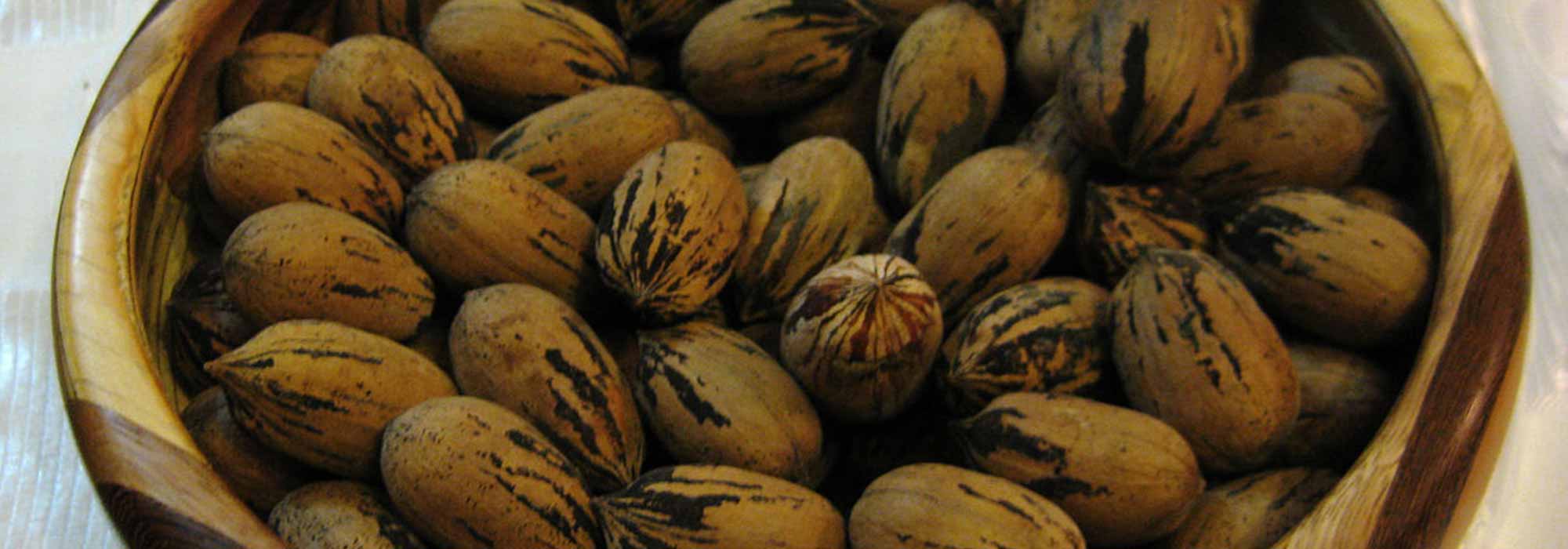
Growing a pecan tree to harvest pecan nuts
Valuable tips for successfully growing pecans
Contents
Carya illinoinensis (or Pecan tree) is a remarkable tree grown for its fruits encased in a drupe, known as pecans. This nut can be enjoyed on its own or used in baking for its subtle flavour reminiscent of walnuts and its numerous benefits. Once well-established, this hardy tree requires little care to produce a bounty of nuts that can be stored for many months. Allow yourself to cultivate this ornamental and fruit-bearing tree with exotic looks in your garden!
Here are our valuable tips for successfully growing the pecan tree and harvesting its delicate nuts!
What is a pecan tree?
Native to the humid forests and swamps of North America, the pecan tree (Carya illinoinensis) is a large tree that produces pecans from August to November. Belonging to the Juglandaceae family, like the walnut tree, it is hardy down to -15°C, and even -20°C depending on the varieties. It requires warm summers and mild autumns to bear fruit, similar to regions in southern France. It has deciduous foliage that is green and turns golden in autumn, developing on branches that can reach several dozen metres in height. Its decorative grey bark peels in strips.
Flowering occurs between March and May: long yellow aments for the male flowers followed by inconspicuous female flowers, which are frequently visited by pollinating insects that will fertilise them at will.
Fruit development then takes several months before the appearance of green, fleshy drupes that give way to fruits covered by a smooth, elongated protective shell, brown in colour. Inside, there is a white, edible almond with a subtle taste, also known as the kernel.
There are different varieties, including the following main ones:
- ‘Gloria Grande’: a tree about thirty metres tall that produces medium-sized nuts;
- ‘Elliot’: a tree 25 metres tall that produces medium-sized shells;
- ‘Mahan’: a large tree that produces large nuts;
- ‘Sumner’: a medium-sized tree, around 15 metres tall, that produces large nuts;
- ‘Choctaw’: a tree 30 metres tall that produces large nuts.

Male flowers and fruits of the pecan tree. ©Urban Forestry, DP
How to grow and plant the pecan tree?
The pecan tree is planted from autumn to spring (excluding frost days), in a region with warm summers and autumns. You should carefully study the planting site as this tree can reach up to 30 m in height, 6 metres in diameter, and requires plenty of sunlight to thrive.
Where to plant the pecan tree?
Avoid windy locations. If you have a pond, river, or stream in your garden, plant the pecan tree nearby as it enjoys semi-humid soils. Its location should not be improvised! It is better to plant it as a solitary specimen in the ground within a lawn given its size and taproot. If you wish to grow it in a pot, choose a very large one, and its growth will naturally be restricted. You will enjoy its ornamental features more than its fruits.
When to plant the pecan tree?
Preferably plant in spring, between March and May.
Planting the pecan tree in the ground
Soak the root ball for 10 minutes in a bucket of water.
- Dig a planting hole 80 cm to 1 metre in all directions as the pecan tree develops a strong root system and a taproot that needs depth;
- Make a mixture of garden soil and potting soil;
- Pour part of the mixture into the hole;
- Gently place the root ball, ensuring the collar is level with the soil surface;
- Fill the gaps with the remaining soil mixture and compact well on the surface;
- Water generously.
Planting the pecan tree in a pot
- Choose a large container, 1 x 1 metre;
- Ensure there are drainage holes in the bottom of the pot;
- Place a layer of drainage material (coarse sand, clay balls, pumice);
- Partially fill it with good quality horticultural potting soil;
- Place the root ball in the pot;
- Fill the gaps around the root ball with potting soil;
- Compact well on the surface;
- Water generously.
Stéphanie’s advice: Once the tree is planted in the ground or in a pot or container, slightly trim the tips of the branches to encourage the growth of new roots. Place a stake and tie the trunk with a soft tie to support it during the first few years.
Discover other Pecan trees
View all →Available in 1 sizes
Available in 1 sizes
Available in 1 sizes
Available in 2 sizes
Available in 1 sizes
Available in 1 sizes
How to care for the pecan tree?
The pecan tree is a very resilient and sturdy tree that requires very little care to thrive. Indeed, the pecan tree does not require pruning.
The year following planting, provide regular water during dry spells and when fruiting. Maintain moisture by applying a thick mulch. This same mulch will protect it from potential severe cold snaps in winter. A supply of special fruit tree fertiliser is recommended in spring to nourish it properly, stimulate its growth, and promote walnut development.
How to harvest and store pecan nuts?
You will only be able to obtain pecan nuts 3 to 4 years after planting. The gardener will need to be patient! Pecans reach ripeness in autumn. They are harvested while still attached to the tree by shaking them off, for the majority, or they may have fallen to the ground. Don’t wait too long to collect them, as squirrels, fond of these almonds, may beat you to it! The shell, once dried, reveals an edible almond with a fine brown skin and white flesh. Once perfectly dried, like walnuts, you can store them for a year in a cool, dry place. For already shelled pecans, keep them in a bag or airtight container in a cool place and consume them within 2 weeks.
→ Learn more in our tutorial: Harvesting and storing pecans: our tips.
How to use pecan nuts?
Pecan nuts are renowned for being very rich in vitamins, iron, protein, and lipids, providing around 700 kcal per 100 grams. Low in saturated fatty acids, they are also said to be excellent for health. Often nibbled throughout the day, they can also be found in numerous pastries such as cookies, brownies, moist cakes, tarts, or apple and pecan cakes.
For more extravagant cooks, caramelise them and add to a squash velouté, or prepare a crust of dried fruits to spread over a fillet of cod in the oven. Chopped, they can decorate and add crunch to a pancake, crêpe, or waffle.
For further reading
- To learn all about this plant, browse our complete guide on the Pecan tree: planting, growing.
- Let yourself be tempted by a pecan tree.
- And why not growing dry fruit trees like the almond tree (Almond tree: planting, pruning and harvesting), the hazel tree (Choosing the right hazel: buying guide) or the walnut tree (Walnut, Juglans regia: planting, pruning and care)!
- Subscribe!
- Contents
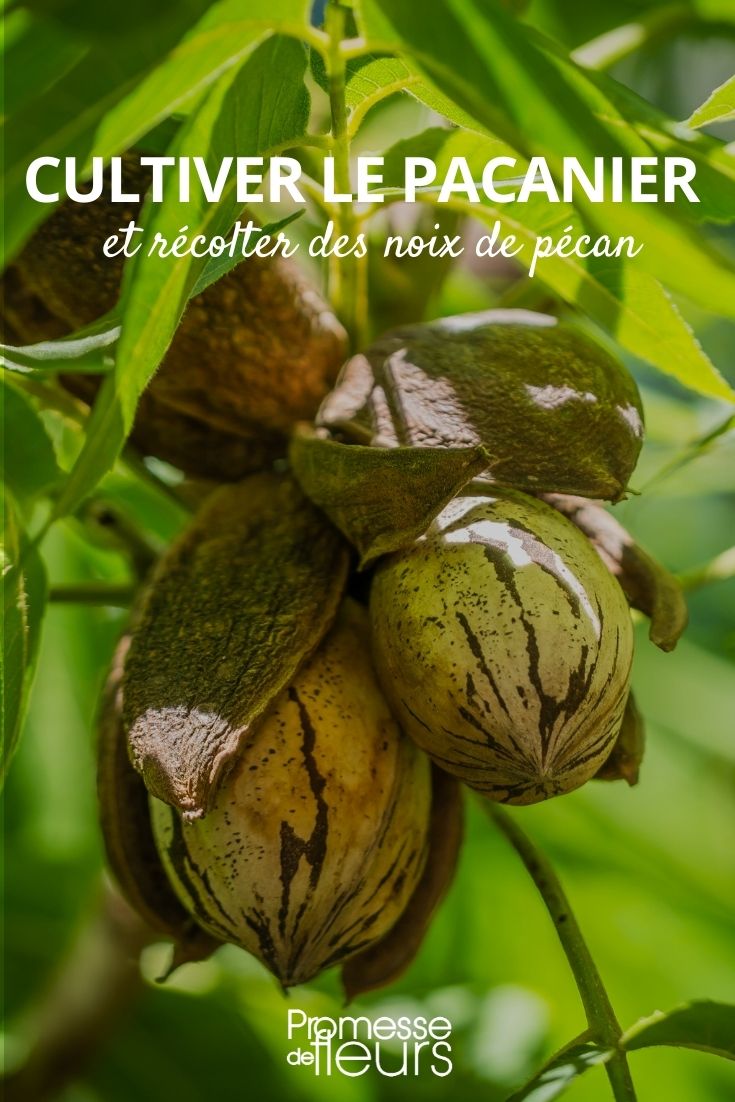






























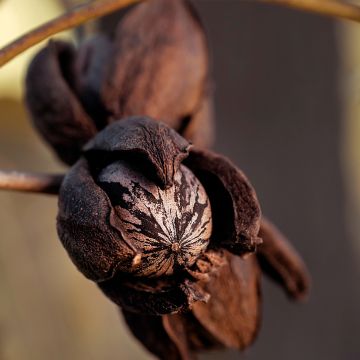
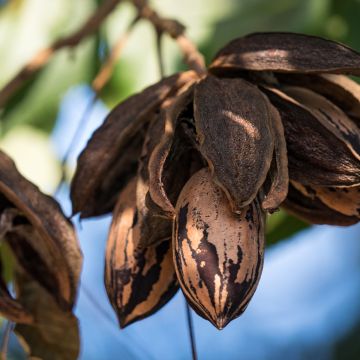
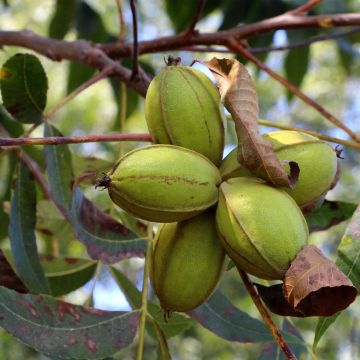
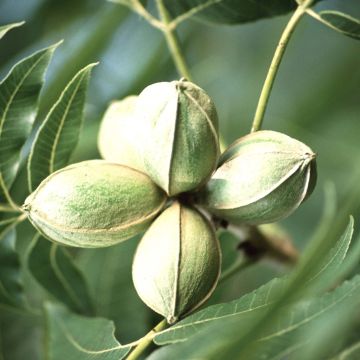
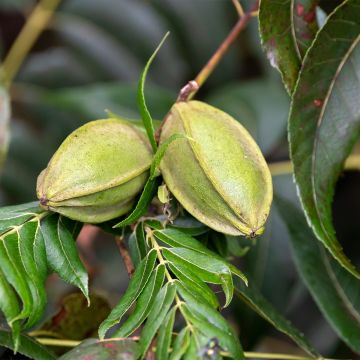
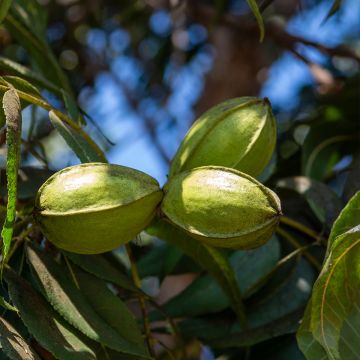
Comments